Window film, sometimes called window tint, is a thin laminated sheet applied to interior or exterior glass surfaces. Window lamination is a solution to maintain room temperature, block the sun’s UV rays, and provide indoor privacy which depends on the types of window film. In addition, installing window tint increases the aesthetic appeal of glass surfaces in your home, office, or other commercial spaces.
Window laminates are available in various types. Each type of window film designs to meet the specific needs of its users. Whether you want to update your windows to control temperature or to add a decorative touch, understanding the different types of window film can help you make the choice that best suits your needs.
In this article, we will explore the different types of window film and highlight their unique features and benefits to guide you. So what are you waiting for? Let’s scroll!
Types of Window Film
Frosted Window Film
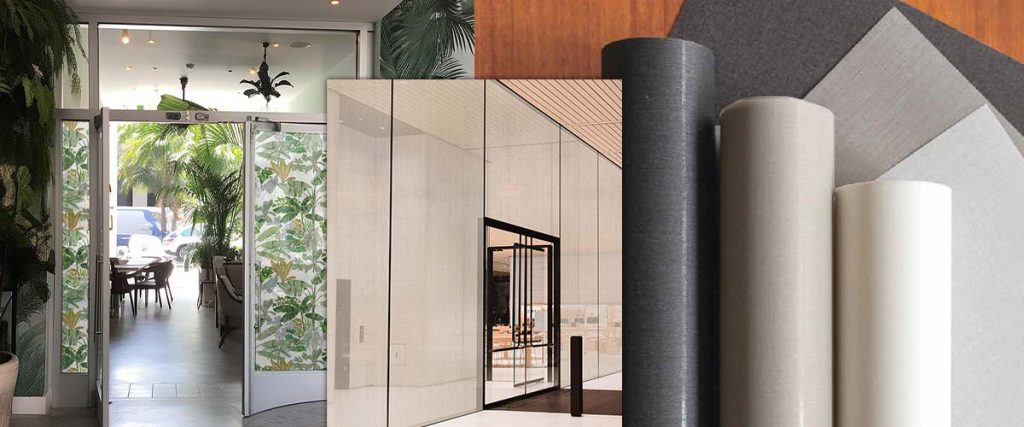
Frosted window film is an excellent choice for maintaining indoor privacy. It can be applied to any window. As a window covering, it is ideal for bathrooms, bedrooms, or any room where you want to retain natural light without sacrificing privacy. The installation of frosted window film is easy. It often uses a simple peel-and-stick application. Additionally, frosted window film is a popular choice for office environments, as it offers a professional look and can be customized with patterns or company logos.
Despite its advantages as UV-blocking window film, frosted window film has disadvantages. Frosted window film is not ideal for environments with extreme heat. However, for tropical countries like Singapore, you can rely on frosted window film. Additionally, improper installation can cause bubbles, tears, and unevenness. It is advisable to use a professional window film installation service to address this issue.
Textured and Gradient Decorative Window Film
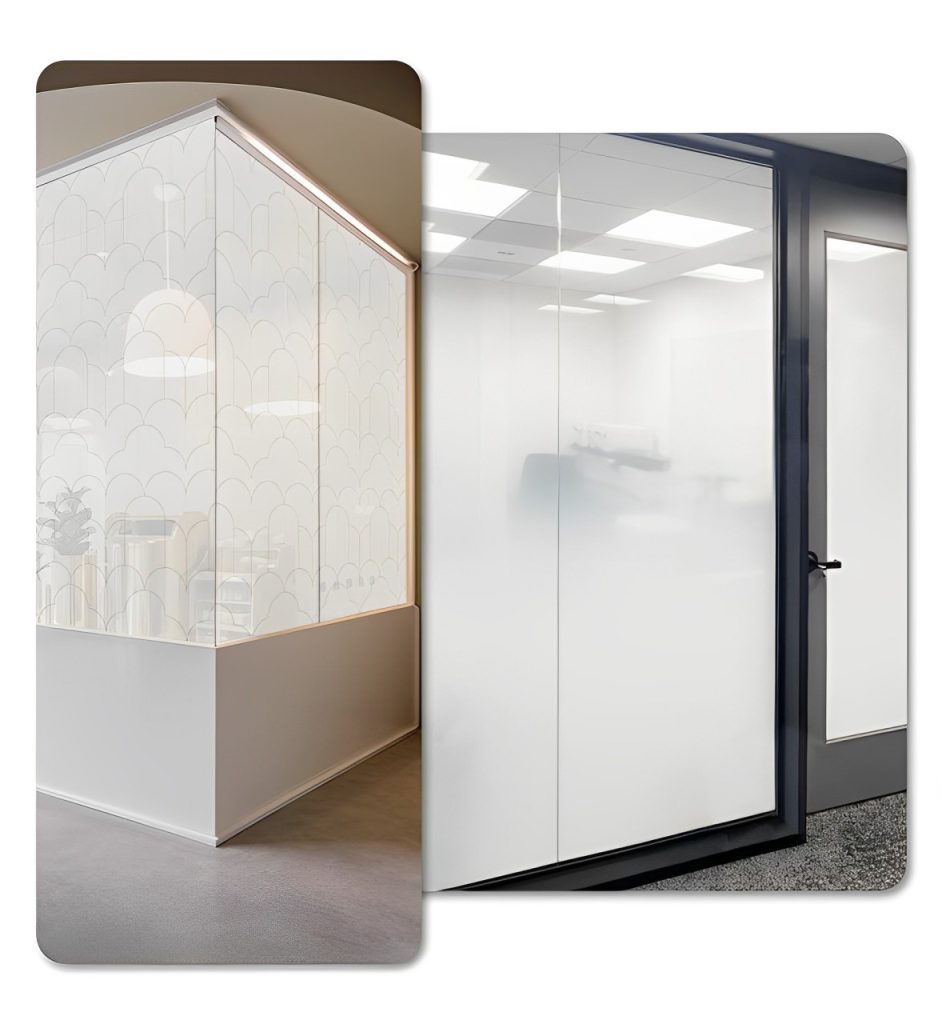
Textured window film is a decorative window film that has a pattern and texture. The function of textured window film is the same as other types of window film. The difference is in the aesthetic value. Textured window film is ideal for conference rooms or office meeting rooms. Often the pattern reflects the company’s brand identity.
Meanwhile, gradient window film offers a smooth transition from opaque to transparent. It creates a gradient effect. Gradient window films are perfect for areas like bathrooms or entryways, where you want varying levels of privacy. Additionally, gradient window film lets in natural light while obscuring direct views. It balances openness and seclusion in your living or working space.
Architectural Window Film
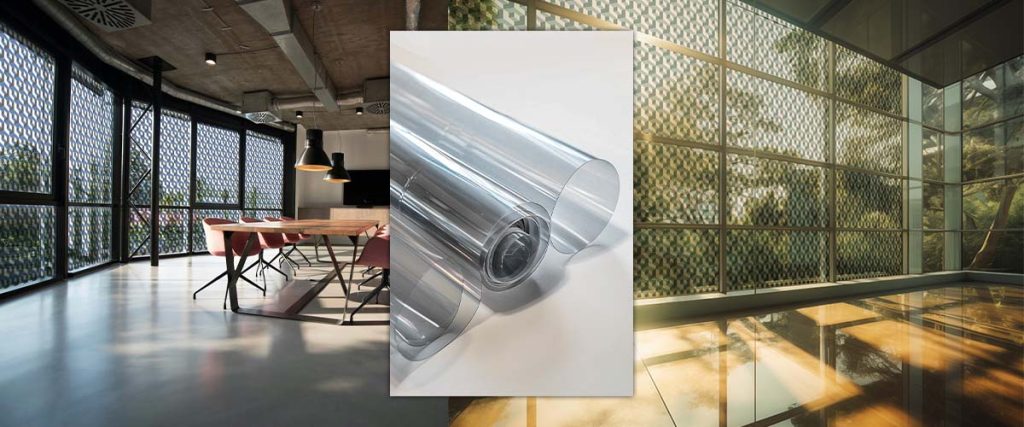
The next type is architectural window film. Architectural window film is a thin plastic layer applied to windows and glass surfaces in buildings. The primary purpose is to reflect solar heat and keep the room cool. It is crucial for buildings where large windows can cause overheating.
Architectural films tend to be thicker and stiffer, usually 3-4 millimetres, to handle large windows. They are generally made from polyester film (PET) with various layers. The film’s exterior layer is often scratch-resistant and protects the underlying layers from harsh weather conditions.
Perforated Vinyl Window Film
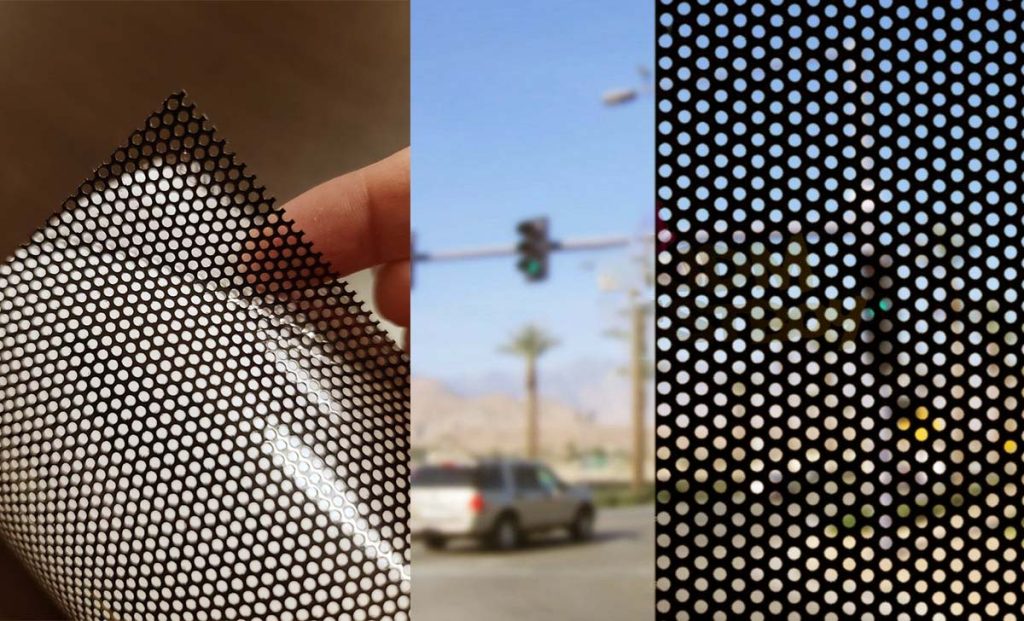
Perforated vinyl window film, also called window perf, is a glass coating with small round holes. It looks opaque on the front but still allows you to see through the window from the inside easily. In other words, you can see clearly out the window, but people outside cannot see in. It is ideal to use as a privacy window film.
Apart from the advantages, perforated vinyl window film also has several disadvantages that need to be considered. Although you can still see outside, the holes can block the view to some extent. Therefore, dotted window film is less suitable for rooms that still depend on natural light. In terms of price, perforated films are generally more expensive than regular window stickers. Lastly, the holes in perforated vinyl window film trap dust and dirt more easily, requiring more effort to keep the film clean.
Reflective Window Film
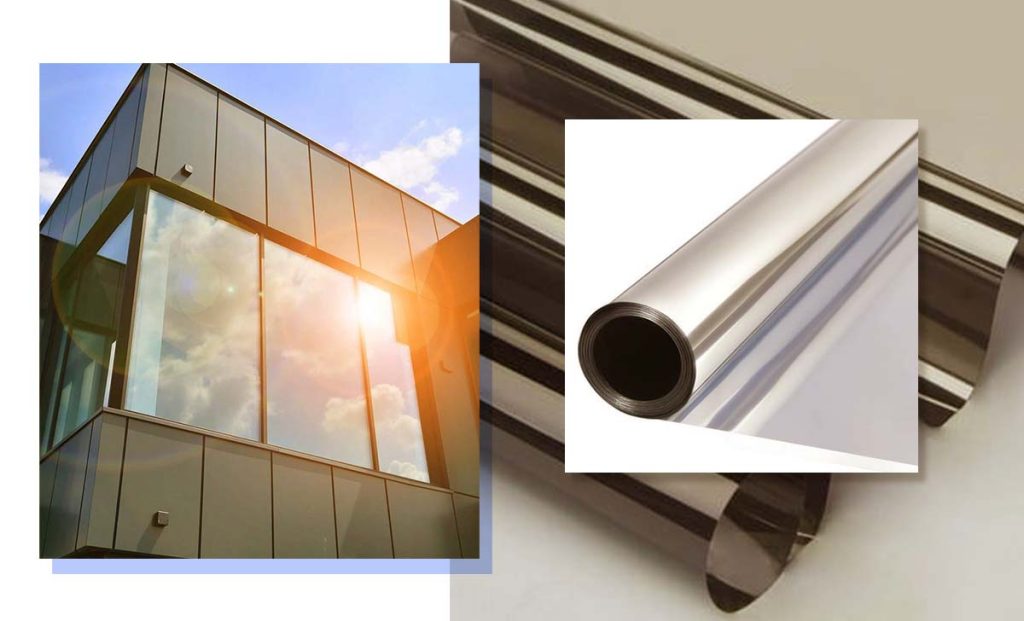
Reflective window film is the appropriate type of window film that is specifically designed with a metallic or mirrored layer. It aims to reflect sunlight and reduce heat gain inside buildings. Known as mirror film, it is available in various shades and levels of reflectivity. The goal is to meet the different preferences and needs of each room. In addition, reflective window film can increase energy efficiency by reducing heat gain and solar glare. It leads to the protection of interior furnishings and occupants from harmful UV rays.
When selecting reflective window film, consider the desired level of reflectivity, window tint color, and additional features such as UV protection or increased privacy. Apart from that, it would be best to consider its shortcomings, such as its ability to maintain privacy in the room. Although it can solve it, it can’t work at night. When the indoor lighting is on, the view from outside will be reversed. It provides a clear view inside. Also, some building codes or homeowners associations may limit the use of reflective window film due to concerns about aesthetics or light pollution.
Solar Window Film
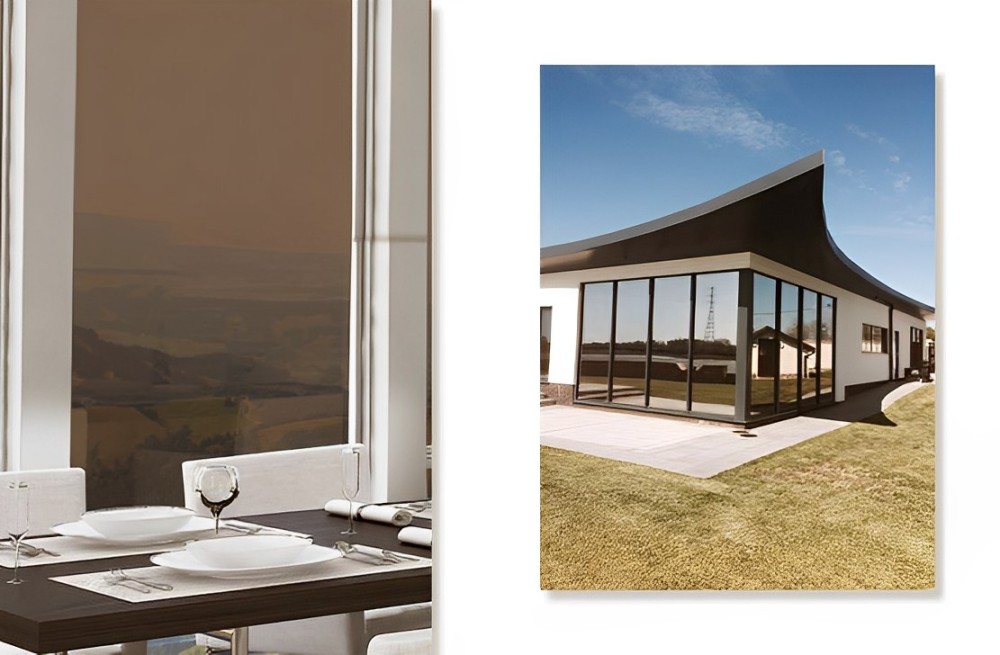
Next is solar window film or heat-controlled window film. It is designed to regulate the transmission of solar energy through windows. The way it works is by reflecting or absorbing solar radiation before it enters the building. That helps reduce heat gain during hot weather, thereby increasing indoor comfort and potentially lowering energy costs such as air conditioning.
Additionally, this solar film can significantly reduce glare caused by direct sunlight without reducing natural light. It aims to make the interior more comfortable and visually attractive. Solar window film typically blocks the most harmful UV rays, helping to protect furniture, artwork, and occupants from sun damage over time.
Fabric Window Film

Fabric window film is a versatile window treatment that combines the functionality of traditional window films with the aesthetic appeal of fabric. It is made from a thin, flexible material that can feature various textures, patterns, and colors. Compared to standard vinyl or polyester films, the fabric offers a softer and more decorative look.
Fabric window film is typically applied to windows using adhesive or static cling, allowing for easy installation and removal without leaving residue. It serves multiple purposes, including providing privacy, reducing glare, and enhancing the overall ambiance of a space by gently diffusing light.
Moreover, particularly diffusing lighting such as living rooms, bedrooms, and bathrooms where privacy is desired without sacrificing natural light. It can also be used in commercial spaces, making it a valuable resource for interior designers looking for versatile solutions. Unlike other window films, it stands out with its unique texture and design options, making it a preferred choice for those looking to personalize their windows with a softer and more stylish touch.
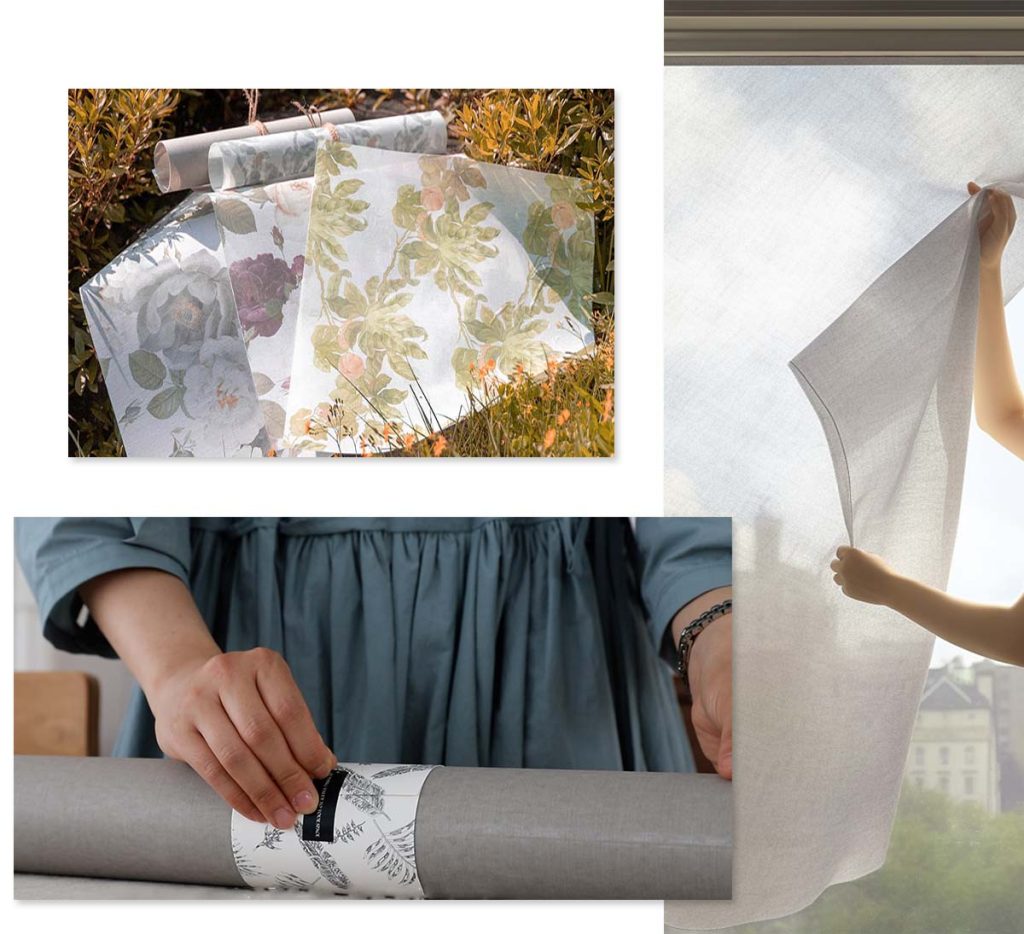
Regular maintenance is important to keep it looking good and working well. Use a soft cloth or gentle vacuum to remove any dust or dirt on the surface. For a deeper clean, gently apply a mix of mild detergent and warm water with a soft sponge or cloth. Rinse with clean water and let it air dry.
No matter your needs, there’s a perfect window film to transform your space. Do your research, consider the factors discussed in this article, and consult a window film professional to find the ideal solution for your windows. With so many options available, you will find a window film that enhances your privacy, comfort, and style.
If you are looking for an HDB window film or for an office that you can customize, consider Honpo window film. With custom window film you can change your window depending on the season, the mood, or your feelings. This is the best window film in Singapore that you must have!

